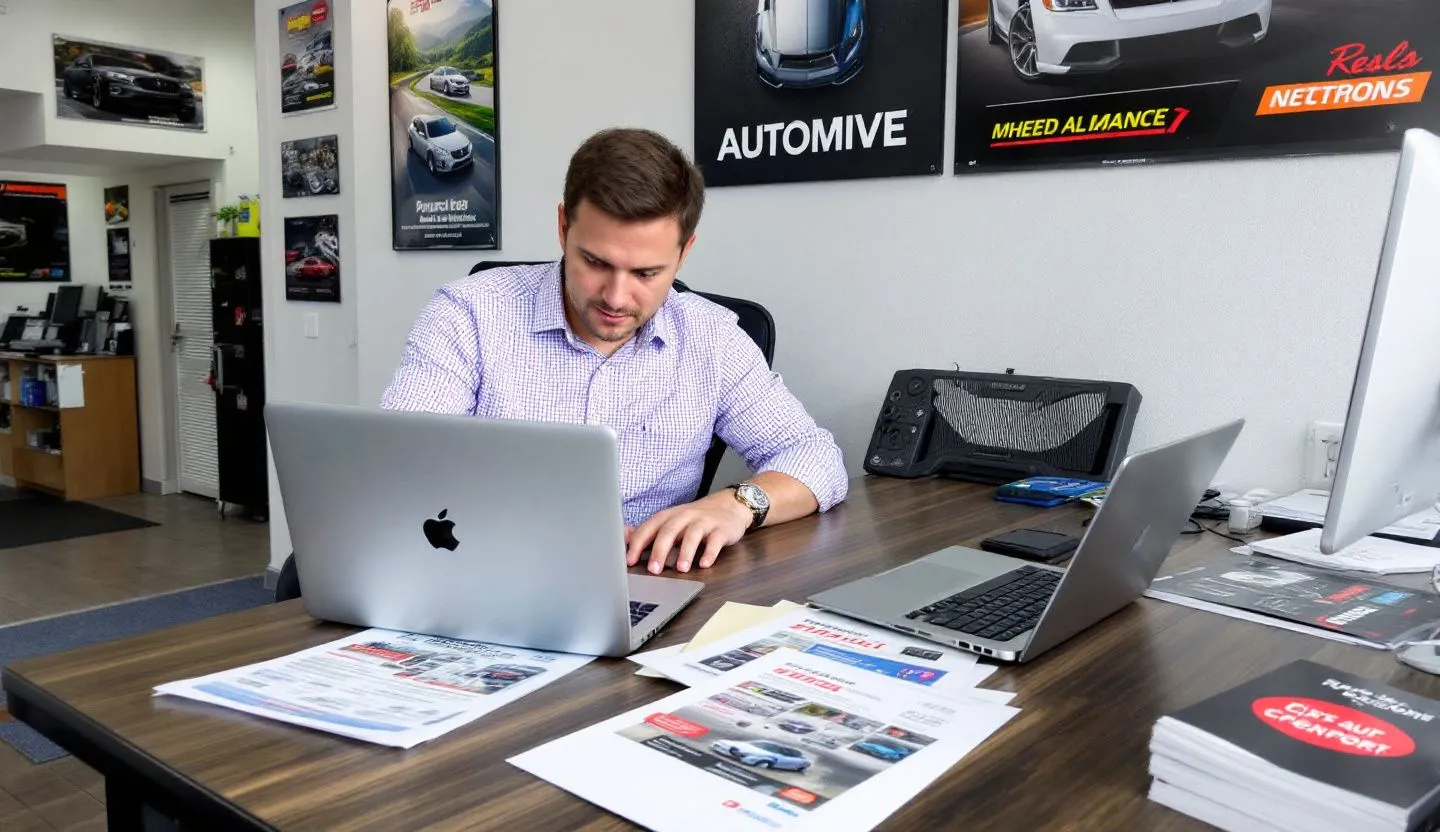We’ve all felt the pressure. The new model launch is imminent, regional marketing teams are clamoring for local assets, and leadership wants everything yesterday. Meanwhile, you’re juggling legacy workflows, legal reviews, and the ever-present risk of a single errant tagline derailing a year’s worth of brand equity. Sound familiar? If you lead marketing or brand for an automotive enterprise, this is your daily reality. The tension between speed and control isn’t just a theoretical debate,it’s the backdrop for every campaign, every compliance check, and every late-night Slack message.
The real-world challenge of automotive global translation
In the automotive industry, every campaign is a high-stakes race. We’re not just talking about the thrill of unveiling a new electric SUV or the anticipation behind an updated safety feature; we’re talking about the scramble to deliver launch content in 25+ languages, each with its own regulatory quirks and cultural nuances. When your brand’s promise,whether it’s “innovation you can trust” or “engineering for life”,must ring true from Munich to Mumbai, the smallest misstep can become a headline.
For many of us, the old way of handling translation still haunts our workflows. Picture this: a single source file bounces between agencies, local offices, and legal teams. Each revision adds another layer of complexity. Meanwhile, deadlines loom, and the dealership network is waiting for materials to start their own sales engines. The result? Content velocity slows to a crawl, and brand consistency becomes a casualty of compromise. This isn’t just inefficient; it’s risky. One off-message phrase can undermine years of brand investment, not to mention expose the company to regulatory scrutiny.
Why the landscape is shifting for global automotive brands
The traditional model,where translation is a final, often siloed step,simply doesn’t cut it anymore. Automotive global translation is no longer just about ticking boxes for compliance or “making do” with quick fixes. Our buyers expect seamless, localized experiences. Regulatory bodies demand precision. And our competitors? They’re racing ahead, deploying content in local markets before we’ve even signed off on the English master.
What’s changed? Three big forces are reshaping our reality:
- Digital acceleration: The rise of omnichannel marketing, social commerce, and real-time engagement means that content,whether it’s a vehicle configurator, after-sales campaign, or influencer partnership,must be ready for global audiences instantly. The days of a single, monolithic launch are gone.
- Brand as business asset: In an era where trust is currency, every market-facing word matters. Inconsistent messaging, tone, or imagery undermines confidence,not just among consumers, but also with dealers, partners, and regulators.
- Complexity at scale: Modern automotive portfolios span ICE, EV, and hybrid models, each with unique selling points, technical specs, and compliance requirements. Multiply that by dozens of languages and regions, and the risk compounds exponentially.
The pressure is on to move faster,without breaking what makes our brands unique.
Where automotive global translation breaks down
Despite the best intentions, most automotive enterprises still rely on a patchwork of translation solutions. These might include a mix of in-house linguists, local marketing teams, and external agencies. While this can work for small, one-off projects, it simply doesn’t scale for the volume and velocity required today.
Let’s break down where things get stuck:
- Fragmented workflows: Each market may have its own preferred vendors, glossaries, and approval processes. When assets are translated in silos, the result is a patchwork of messaging and visual inconsistency.
- Manual processes: Emailing files back and forth, tracking revisions in spreadsheets, and relying on human memory for brand terms,these are recipes for delay and error.
- Compliance risks: Regulatory requirements (think emissions claims, financing disclosures, safety standards) vary by market. When translation and compliance aren’t tightly integrated, the risk of costly missteps skyrockets.
- Lost institutional knowledge: When translation memories, term bases, and brand guidelines live in disconnected systems, learnings don’t scale. Every new project starts from scratch, slowing velocity and increasing costs.
The result? Marketing teams burn out chasing approvals, local offices take shortcuts to hit deadlines, and creative directors lose sleep over inconsistent campaigns.
The new approach: scaling translation for speed and consistency
It’s time for a shift,from fragmented, reactive translation to a proactive, integrated approach. Automotive global translation, when done right, becomes a strategic lever. It’s not just about faster turnaround; it’s about building a system where speed and brand control reinforce each other, not compete.
Here’s how we’re seeing leading brands make the leap:
- Centralized translation memory and terminology management: By creating a single source of truth for brand terms, model names, and legal disclaimers, teams can ensure that every asset,regardless of language or market,reflects the same core identity. This isn’t just about accuracy; it’s about scaling what makes your brand uniquely yours.
- Integrated platforms and automated workflows: The best solutions connect content creation, translation, legal review, and distribution in one seamless pipeline. Think of it as a design system for language: assets move fluidly from creative to compliance, with real-time visibility and control.
- Role-based permissions and audit trails: When every step is tracked and every approval is logged, compliance teams can sleep easier. This also makes it easier to onboard new markets or partners without reinventing the wheel.
- Continuous improvement through analytics: By tracking turnaround times, revision rates, and quality metrics, marketing ops leaders can identify bottlenecks and optimize processes over time.
This isn’t a utopian vision,it’s happening right now in forward-thinking automotive organizations.
Lessons from the front lines: what works in practice
Let’s make this real. A global automaker recently faced the challenge of launching its flagship EV simultaneously in 32 markets. The traditional process,central creative developing master assets, followed by a waterfall of translations,would have taken 12 weeks. That’s simply too slow for today’s competitive landscape.
Instead, they took a new approach:
- They built a centralized translation memory: capturing every approved tagline, technical spec, and legal disclaimer from past launches. This meant translators in every market started with an aligned, on-brand foundation.
- They integrated their translation platform: with their creative and compliance tools. As soon as the English creative was approved, it triggered a cascade,translators received pre-filled content, legal teams reviewed in parallel, and local marketing leads could see real-time status.
- They empowered local teams: with clear guidelines and self-service access to approved assets. This reduced the endless back-and-forth and empowered markets to adapt content within guardrails.
The result? The EV launch landed in every market, on time, with zero compliance incidents and record engagement. Content velocity increased by 60%, and brand consistency actually improved because everyone was working from the same playbook.
Why brand consistency matters more than ever
It’s tempting to see translation as a “back office” function,something that just needs to get done so we can check the box and move on. But in reality, every touchpoint is a brand moment. When your signage in Tokyo feels off-message, or your safety disclaimer in São Paulo gets lost in translation, it erodes trust,both with customers and internal stakeholders.
Brand consistency isn’t about enforcing sameness; it’s about creating a cohesive experience that builds confidence at every step. For automotive brands, this is especially critical. The stakes are high,vehicles are emotional purchases, safety is paramount, and the competition is fierce.
When translation is tightly integrated with brand governance, creative ops, and compliance, you create a virtuous cycle. Each new campaign strengthens your brand, rather than diluting it.
Building a translation system that scales
If you’re responsible for brand, marketing operations, or compliance in the automotive sector, you know that “just translate it” is never the answer. Instead, scaling automotive global translation requires a holistic, enterprise-grade approach.
Here’s what we’ve learned works best:
- Design translation into the creative process from day one: Rather than treating translation as a final step, involve linguists, local marketers, and compliance early. This ensures that creative concepts, taglines, and technical claims will land in every market.
- Standardize, but allow for local nuance: Create core templates, brand guidelines, and approved terminology,but also empower local teams to adapt messaging within clear parameters. This balance drives both speed and relevance.
- Invest in technology that integrates, not just automates: Look for platforms that connect your existing creative, legal, and distribution systems. The goal isn’t just to move faster, but to move smarter,reducing manual work, cutting down on errors, and building a living library of brand assets.
- Prioritize security and compliance: With increasing data privacy regulations and rising cyber threats, your translation workflows must meet enterprise-grade security standards. This isn’t just an IT concern; it’s a brand imperative.
- Measure, iterate, and improve: Track not just speed, but also quality, consistency, and compliance outcomes. Use analytics to spot trends and continuously refine your approach.
How to bring IT, legal, and compliance into the fold
In a perfect world, marketing would have free rein to create and deploy content at lightning speed. In reality, every campaign touches IT, legal, and compliance,whether it’s for security reviews, regulatory approvals, or risk assessments. The key is to build collaborative workflows that bring these teams in early, rather than treating them as gatekeepers.
For example, when launching a new vehicle in the EU, legal may need to review claims about emissions or advanced driver-assistance systems (ADAS). By integrating legal review into the translation workflow,rather than bolting it on at the end,you avoid last-minute rewrites and reduce time-to-market.
Similarly, IT teams need assurance that translation platforms meet enterprise security standards, integrate with existing systems, and protect sensitive IP. By involving IT early, you can avoid costly rework and build a foundation for scale.
This cross-functional approach turns potential roadblocks into partners, ensuring smoother launches and stronger brand outcomes.
The compliance advantage of integrated automotive global translation
Compliance is often seen as the “brake pedal” in the marketing engine. But in reality, a well-integrated compliance process can be a strategic advantage. When translation workflows are auditable, version-controlled, and aligned with regulatory requirements, you don’t just move faster,you move with confidence.
Consider the challenge of managing safety disclaimers across dozens of markets. With a centralized translation memory, you ensure that every claim is accurate, approved, and up-to-date. Audit trails provide clear documentation for regulators. And when requirements change,as they inevitably do,you can update assets globally with a few clicks, rather than launching a fire drill.
This approach doesn’t just reduce risk; it frees up creative and marketing teams to focus on what they do best,building campaigns that move markets.
Unlocking new possibilities for automotive content velocity
What does all this mean in practice? When you scale automotive global translation with an integrated, enterprise-grade approach, new possibilities open up:
- Faster, simultaneous launches: You can roll out global campaigns in days, not months,without sacrificing quality or compliance.
- Consistent, on-brand messaging: Every asset, in every market, reflects the same core promise,building trust with customers, dealers, and partners.
- Lower costs and higher ROI: By reusing approved content, reducing manual work, and minimizing errors, you drive efficiency and stretch your marketing budget further.
- Greater agility: When market conditions shift,or regulatory requirements change,you can pivot quickly, updating assets across regions without the usual chaos.
- Stronger collaboration: With shared tools, processes, and data, marketing, creative, legal, and IT teams work as a single, aligned unit.
This is the future of automotive marketing: fast, flexible, and fiercely on-brand.
Real outcomes from enterprise leaders
Let’s circle back to the reality for enterprise leaders. When we’ve helped teams make the leap to integrated, scalable translation, the benefits ripple across the organization.
For example, a leading luxury automaker reduced time-to-market for model launches by 40%, while simultaneously improving compliance pass rates. Their secret? A single, integrated platform that connected creative, translation, and legal review,supported by robust governance and analytics.
Another brand used centralized translation memory to cut localization costs by 25%, freeing up budget for more creative work. And perhaps most importantly, their brand tracking scores improved, reflecting stronger, more consistent messaging worldwide.
These aren’t outliers,they’re proof that with the right approach, you can have both speed and control.
How to get started: practical steps for scaling translation
Ready to move beyond the old, fragmented translation model? Here’s how to get started:
- Map your current process: Identify where bottlenecks, manual steps, and inconsistencies occur. Look for opportunities to centralize, automate, or integrate.
- Involve stakeholders early: Bring creative, legal, IT, and local market leads into the conversation. The more aligned you are up front, the smoother the rollout.
- Invest in the right technology: Look for solutions that offer centralized translation memory, seamless integrations, robust security, and real-time analytics.
- Pilot, measure, scale: Start with a high-impact campaign,like a model launch or after-sales initiative. Measure results, gather feedback, and refine your approach before scaling up.
- Build a culture of continuous improvement: Encourage teams to share learnings, document best practices, and iterate. The goal is not just to move faster, but to get better with every campaign.
The journey to scalable, integrated translation isn’t always easy,but the payoff is worth it. You’ll deliver better experiences for customers, empower local teams, and build a brand that stands out in every market.
Scaling automotive global translation is no longer a nice-to-have,it’s a strategic imperative for enterprise marketing and brand leaders who want to win in a hyper-competitive, fast-moving world. The old way of handling translation,fragmented, reactive, and manual,simply can’t keep pace with the demands of simultaneous global launches, regulatory scrutiny, and the need for brand consistency at scale.
The good news is that by embracing integrated, enterprise-grade translation solutions, automotive organizations can dramatically accelerate content velocity without sacrificing what matters most: the core of their brand. Centralized translation memory, automated workflows, and tight integration with creative and compliance teams empower brands to launch faster, adapt quickly, and deliver a unified message in every market. The result is a marketing organization that’s agile, efficient, and trusted,by customers, partners, and regulators alike. The future belongs to those who can move at speed, without losing sight of who they are. And with the right approach to automotive global translation, that future is within reach.







